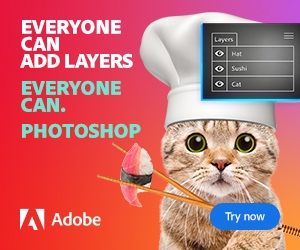The world of video content is constantly evolving. What started as simple home movies and TV broadcasts has transformed into an all-encompassing medium that drives entertainment, education, marketing, and communication in the digital age. From the rise of streaming platforms to the integration of interactive and immersive video experiences, video content continues to be a powerful force in the way we consume information.
As technology advances, the future of video content is being shaped by a variety of trends and innovations. In this article, we’ll explore some of the most exciting developments in the video industry and how they are likely to impact creators, consumers, and marketers in the years to come.
1. The Rise of Interactive and Shoppable Videos
One of the most exciting trends in video content is the rise of interactive videos. These videos go beyond passive viewing by allowing viewers to actively engage with the content. Interactive videos have been around for a while, but recent advancements in technology are making them more seamless and accessible to a broader audience.
Interactive Videos: These videos enable viewers to make choices that influence the narrative, essentially creating a personalized experience. Popularized by platforms like Netflix with its interactive film “Bandersnatch,” this form of video content is expanding into other genres, from gaming to education. It allows audiences to shape the outcome of the video, creating a sense of immersion and engagement.
Shoppable Videos: With the rise of e-commerce, video content is becoming more integrated with shopping experiences. Shoppable videos allow viewers to click on products within the video and make a purchase without leaving the platform. Brands like Instagram, TikTok, and YouTube have already introduced shopping features, enabling creators and businesses to monetize their content directly. This trend is expected to grow as social commerce becomes more integrated with video content.
For marketers, these innovations offer an exciting opportunity to create highly engaging, personalized, and monetizable video experiences for their audiences.
2. 4K and 8K Video: The Future of Resolution
High-definition video has become the standard in recent years, with 1080p being the most common resolution for online videos. However, as technology advances, video resolution continues to improve, and the future of video content is looking toward 4K and 8K video.
4K Video: With 4K resolution becoming more accessible, especially in consumer-grade cameras and smartphones, creators now have the ability to produce content with incredibly sharp and detailed visuals. Many streaming platforms, such as Netflix and YouTube, have already made 4K content available, and this trend is only going to increase as 4K monitors and TVs become more widespread.
8K Video: While still in its early stages, 8K video is poised to be the next frontier in high-definition content. Offering four times the resolution of 4K, 8K will provide an unparalleled level of detail. Though it’s not yet widely adopted, some filmmakers and creators are already experimenting with 8K footage, and platforms like YouTube are beginning to support 8K video playback. As technology improves and demand increases, 8K content will become more common, especially in areas like gaming, live events, and high-end cinematography.
For creators and marketers, embracing higher-resolution video will allow for more immersive, visually stunning content that enhances the viewing experience, especially on large screens and advanced displays.
3. Virtual Reality (VR) and Augmented Reality (AR) Video Experiences
Virtual reality (VR) and augmented reality (AR) are two technologies that are drastically changing how video content is consumed and experienced. These immersive technologies are transforming video content from a passive activity into an interactive, fully immersive experience.
Virtual Reality: VR allows viewers to immerse themselves completely in a 360-degree environment. By using VR headsets, users can step into a fully realized virtual world and interact with it. This technology is being used in gaming, filmmaking, training, and even live events. Companies like Oculus (owned by Facebook) and HTC Vive are leading the way in VR hardware, while platforms like YouTube and Facebook are beginning to support VR video content.
Augmented Reality: AR, on the other hand, overlays digital elements onto the real world. With AR, viewers can interact with virtual objects or characters within their physical environment. Popularized by apps like Pokémon Go, AR has also found applications in advertising, entertainment, and even product demonstrations. For example, IKEA’s AR app allows users to visualize furniture in their home environment before making a purchase.
For content creators, VR and AR offer new ways to tell stories and engage audiences. While VR offers fully immersive experiences, AR allows creators to blend digital elements with the real world, providing a more interactive and engaging form of video content.
4. AI-Driven Video Creation and Editing
Artificial intelligence (AI) is rapidly becoming a game-changer in video content creation and editing. With the help of AI, video production processes that once took hours or even days can now be completed in a fraction of the time. AI tools can analyze footage, automatically edit content, and even generate new content based on user inputs.
Automated Editing: AI-powered video editing tools can automatically edit raw footage by identifying key scenes, cutting out unnecessary content, and even applying effects or transitions. Tools like Adobe Premiere Pro’s AI-powered “Sensei” feature can help speed up editing by automatically color-correcting footage or adding simple effects. This allows creators to focus more on the creative aspects of video production, while AI handles the repetitive tasks.
AI-Generated Videos: AI is also being used to create entirely new video content. Platforms like Synthesia allow users to generate videos with AI-generated avatars that can speak in multiple languages, creating a more personalized experience for viewers. This technology is already being used for educational videos, marketing campaigns, and even news broadcasts.
For marketers, AI-driven video creation and editing tools can save time, reduce costs, and provide new opportunities to scale video content production.
5. Live Streaming and Real-Time Video Interaction
Live streaming has grown rapidly in popularity, with platforms like Twitch, YouTube Live, Facebook Live, and Instagram Live allowing users to broadcast in real time. Live streaming offers a unique opportunity for creators, brands, and influencers to engage with their audience directly and in real-time, creating a sense of connection and urgency.
Live video content is often more engaging than pre-recorded videos, as it allows viewers to comment, ask questions, and interact with the creator in real time. As a result, live streaming has become a key tool for events, product launches, Q&A sessions, and influencer marketing.
The next step for live streaming will be the integration of interactive elements like live polls, shopping features, and augmented reality effects. These features will allow brands to enhance the live streaming experience and create more dynamic and engaging content for their audience.
6. The Growing Importance of Mobile Video
Mobile devices have become the dominant way people consume video content. With the increase in mobile phone usage, video content is now more accessible than ever, and mobile-first platforms like TikTok, Instagram Reels, and Snapchat are seeing massive growth.
Creating content specifically for mobile platforms involves shorter videos, vertical video formats, and optimized viewing experiences for smaller screens. As mobile video consumption continues to rise, creators and marketers will need to focus on creating content that is engaging, easy to watch, and optimized for mobile devices.
Conclusion: The Future is Visual and Immersive
The future of video content is more exciting than ever. With innovations like interactive videos, VR and AR experiences, AI-powered editing, and live streaming, the video industry is on the brink of massive transformation. As technology continues to evolve, creators, marketers, and consumers will have new and exciting ways to engage with video content.
For businesses and marketers, embracing these trends and staying ahead of the curve will be key to maintaining relevance in a fast-changing digital landscape. Whether it’s adopting new technologies, experimenting with immersive video formats, or creating highly engaging social media content, the future of video content is visual, interactive, and more immersive than ever before.




